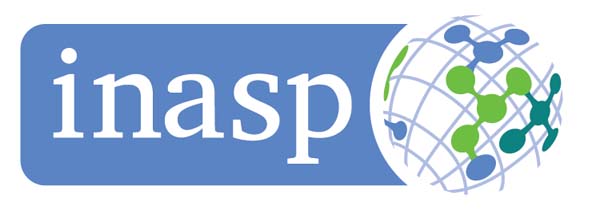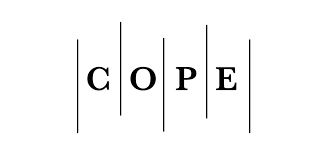Implementation of Li-Fi Technology in Smart Home Systems: Development and Analysis of a Prototype for Enhanced Wireless Communication
DOI:
https://doi.org/10.29304/jqcsm.2024.16.41771Keywords:
Li-Fi, VLC, Arduino, LED, KNX, photodiode sensor, intelligent homeAbstract
Exploring innovative communication technologies has been a pressing need due to the need for reliable and efficient data transmission in networks such as industrial automation, IoT devices, and healthcare systems. This research investigates a wireless communication system that uses visible light, called microcontrollers, with Li-Fi technology instead of radio waves to enhance data accuracy and resilience. Unlike traditional legacy systems, Li-Fi technology provides a buffer against electromagnetic interference, making it a promising alternative for smart home automation. This research includes a developed prototype that uses visible light communication (VLC) through LEDs and an LDR receiver, controlled by an Arduino microcontroller. The KNX standard was adopted in building the proposed system, which has been widely adopted in building automation. The results showed that the Li-Fi-based system improves the accuracy of data transmission as well as the data transmission power. This research, along with other researches on Li-Fi, contributes by demonstrating its applicability in smart home environments, and thus this technology will revolutionize wireless communications across various fields.
Downloads
References
Marikyan, D., Papagiannidis, S., & Alamanos, E. (2019). A systematic review of the smart home literature: A user perspective. Technological Forecasting and Social Change, 138, 139-154.
Foko, T. E., Dlodlo, N., & Montsi, L. (2013, August). An integrated smart system for ambient-assisted living. In Conference on Internet of Things and Smart Spaces (pp. 128-138). Berlin, Heidelberg: Springer Berlin Heidelberg.
Lin, J. C. (2016). Human exposure to RF, microwave, and millimeter-wave electromagnetic radiation [Health Effects]. IEEE Microwave Magazine, 17(6), 32-36.
Arbizzani, E., Civiero, P., & Mangiatordi, A. (2018). Smart Homes and Services design approach for AAL in Italy. In Innovative Solutions for an ageing Society. Proceedings of SMARTER LIVES 2018, 20.02. 2018, Innsbruck (pp. 87-94). Pabst Science Publishers.
Kontkanen, S., Dillon, P., Valtonen, T., Eronen, L., Koskela, H., & Väisänen, P. (2017). Students’ experiences of learning with iPads in upper secondary school–a base for proto-TPACK. Education and Information Technologies, 22, 1299-1326.
Goswami, P., & Shukla, M. K. (2017). Design of a Li-Fi transceiver. Wireless Engineering and Technology, 8(4), 71-86.
Shamsudheen, P., Sureshkumar, E., & Chunkath, J. (2016). Performance analysis of visible light communication system for free space optical communication link. Procedia technology, 24, 827-833.
Isik, M. F., Yartasi, B., & Haboglu, M. R. (2017). Applicability of Li-Fi technology for industrial automation systems. International Journal of Electronics and Electrical Engineering, 5(1), 21-25.
Noshad, M., & Brandt-Pearce, M. (2016). Hadamard-coded modulation for visible light communications. IEEE Transactions on Communications, 64(3), 1167-1175.
Singh, N. Li-Fi: Lighting the Smart Classes using Wireless Networks.
Perwej, Y. (2017). The next generation of wireless communication using Li-Fi (Light Fidelity) technology. Journal of Computer Networks (JCN), 4(1), 20-29.
Agarwal, S., Omer, Y., Patil, T. B., & Sawant, S. C. (2017). Solar panel cells as power source and Li-Fi data nodes integrated with solar concentrator. International Journal of Engineering and Applied Computer Science, 2(5), 172-175.
Tsonev, D., Videv, S., & Haas, H. (2015). Towards a 100 Gb/s visible light wireless access network. Optics express, 23(2), 1627-1637.
Guan, H., & Hina, M. D. (2024). A Study on the Feasibility of LiFi in an Intra-Vehicular Data Transmission Application. IEEE Access.
Zhong, X., Miao, P., & Wang, X. (2024). Enhanced Gain Difference Power Allocation for NOMA-Based Visible Light Communications. Electronics, 13(4), 776.
Islam, M. M., Hasan, M. K., Islam, S., Balfaqih, M., Alzahrani, A. I., Alalwan, N., ... & Ghazal, T. M. (2024). Enabling pandemic‐resilient healthcare: Narrowband Internet of Things and edge intelligence for real‐time monitoring. CAAI Transactions on Intelligence Technology.
Darusalam, U., Nathasia, N. D., Zarlis, M., & Priambodo, P. S. (2024). Simulating Free-Space Optical Communications to Support a Li-Fi Access Network in a Smart City Concept. CommIT (Communication and Information Technology) Journal, 18(1), 17-27.
Yarbrough, P., Welker, T., Silva, D., Islam, R., Patamsetti, V. V., & Abiona, O. (2022). Analyzing Li-Fi Communication Benefits Compared to Wi-Fi. International Journal of Communications, Network and System Sciences, 15(6), 67-77.
Athab, A. F., & Daghal, A. S. (2020, November). IoT system to limit speed rate by using gps and rf devices. In IOP Conference Series: Materials Science and Engineering (Vol. 928, No. 3, p. 032077). IOP Publishing.
Downloads
Published
How to Cite
Issue
Section
License
Copyright (c) 2025 Ali Fadhel Athab

This work is licensed under a Creative Commons Attribution-NonCommercial-NoDerivatives 4.0 International License.













